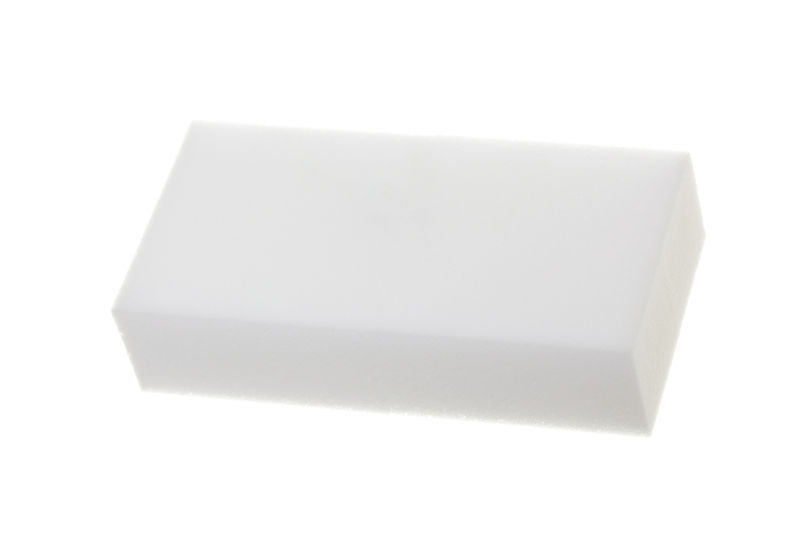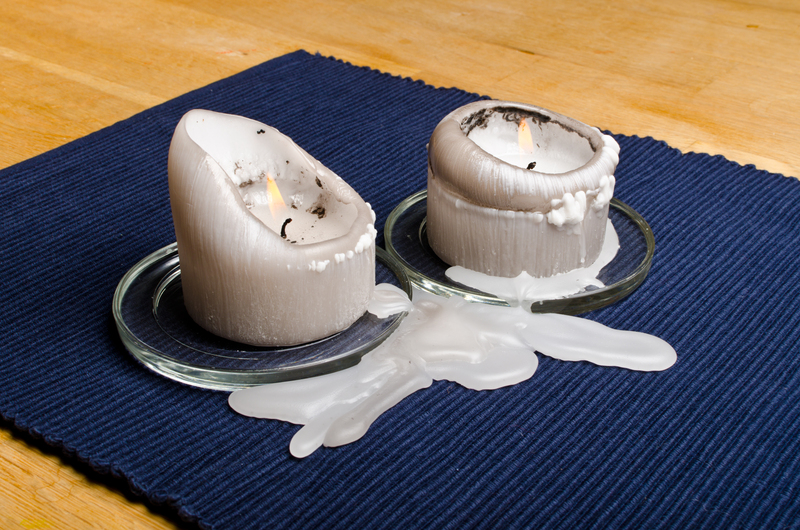Mastering the Art of Cleaning Mould from Window Sills
Posted on 31/08/2025
Mastering the Art of Cleaning Mould from Window Sills
If you have ever spotted black, green, or brown spots lurking along your window sills, you're dealing with a common nemesis: mould. Not only can mould be unsightly, it can also cause health issues and damage your home's integrity. Mastering the art of cleaning mould from window sills is not just about keeping your living space attractive but also about maintaining the health and safety of your indoor environment.
Why Does Mould Grow on Window Sills?
Mould thrives in areas where there is excess moisture, poor ventilation, and a food source like organic matter or dust. Window sills, especially those made of wood, are prone to collecting condensation, which creates a perfect environment for mould to flourish.
Common Causes of Mould on Window Sills
- High humidity levels indoors
- Poor air circulation or ventilation
- Leaking windows or condensation build-up
- Inadequate cleaning or dust accumulation
- Older or poorly sealed windows
Understanding these causes is the first step towards effective mould removal. By tackling the source of the problem, you can prevent mould from coming back after you've cleaned.

Is Mould on Window Sills Dangerous?
_Yes, it can be._ Mould spores are allergens and can trigger asthma, allergies, respiratory issues, and even headaches. For those with pre-existing health conditions, children, or the elderly, exposure to mould in the home should be taken very seriously.
In addition to health concerns, prolonged mould growth can damage your window frames and sills, leading to rot, peeling paint, and structural issues. Therefore, removing mould from window sills is not just a matter of appearance; it's essential for maintaining a healthy, happy home.
Essential Tools and Safety Gear for Cleaning Mould
Before you start your mould cleaning mission, gather the right materials and safety equipment to ensure the process is both effective and safe.
- Protective gloves (rubber or latex)
- Face mask (N95 or similar to block spores)
- Safety goggles
- Spray bottle
- Cleaning brushes or old toothbrush
- Microfiber cloths or paper towels
- Household cleaners (further details below)
- Disposable bag for contaminated waste
Always open your window when cleaning mould to ensure good ventilation and minimize inhalation of airborne spores.
Top Cleaning Solutions for Window Sill Mould Removal
There are several effective solutions for removing mould from window frames and sills. Choose the one that suits your needs, availability, and environmental preferences:
1. White Vinegar Solution
- Natural and non-toxic
- Kills up to 82% of mould species
- Pour undiluted white vinegar into a spray bottle for best results
2. Baking Soda Paste
- Gentle on surfaces, especially wooden window sills
- Mix baking soda with water to form a paste
- Helps remove both stains and odours
3. Hydrogen Peroxide (3%)
- Antifungal and antibacterial
- Pour 3% hydrogen peroxide directly onto the affected area
- Let sit for 10 minutes before scrubbing
4. Commercial Mould Cleaners
- Designed specifically for mould removal
- Follow product instructions carefully and check for surface compatibility
*Bleach can be used, especially for non-porous surfaces, but it's not always the best choice for wooden sills as it may cause discoloration and doesn't penetrate porous material. Use with caution and always test a small area first.*
Step-by-Step Guide: How to Clean Mould from Window Sills
Ready to master the art of cleaning mould from your window sills? Follow these comprehensive steps for the best results:
Preparation: Safety First
- Wear gloves, a mask, and goggles
- Open the window to increase ventilation
- Remove any curtains or blinds and wash them if necessary
Step 1: Vacuum or Wipe Loose Mould Spores
- Using a vacuum with a HEPA filter, gently remove loose mould spores from the surface
- Alternatively, use a damp paper towel to wipe away dust and spores. Dispose of the cloth immediately.
Step 2: Apply Your Chosen Cleaning Solution
- Spray the affected sill with white vinegar, hydrogen peroxide, or your chosen cleaner
- Allow the solution to sit for 10-15 minutes to penetrate mould roots and help kill spores
Step 3: Scrub the Surface
- Use a cleaning brush, old toothbrush, or gentle scrubbing pad
- Scrub thoroughly but carefully - especially on wooden window sills to avoid scratching
- Pay special attention to corners and crevices where mould can hide
Step 4: Rinse and Dry
- Wipe the area with a clean, damp cloth to remove any residue
- Dry the window sill completely with a fresh towel
- Leave the window open until it's completely dry
Step 5: Dispose of Cleaning Materials Safely
- Seal used cloths, wipes, and gloves in a plastic bag and dispose of them properly
For severe mould contamination or recurring issues, consult a professional mould remediation service to assess the extent of the problem and recommend further action.
Tips for Cleaning Mould from Wooden Window Sills
Wood is a porous material, which means mould can penetrate beneath the surface, making it more challenging to eradicate completely. Here are some special tips:
- Avoid soaking the wood, as too much water encourages further mould growth
- Use a gentle touch when scrubbing to avoid damaging the wood finish
- After cleaning, consider lightly sanding and re-sealing the area to prevent future problems
- Regularly dust and inspect for early signs of new mould growth
Preventing the Return of Mould on Window Sills
Once you've successfully removed mould from your window frames and sills, prevention becomes your new priority. Learn how to stop mould from returning in the future by adopting these habits:
Maintain Proper Ventilation
- Use extractor fans in bathrooms and kitchens
- Open windows regularly to allow moisture to escape
- Consider installing air vents or trickle vents if possible
Control Indoor Humidity
- Keep humidity below 60% for best results - use a dehumidifier if necessary
- Avoid drying clothes indoors without adequate ventilation
- Address leaks or condensation problems promptly
Regular Cleaning and Maintenance
- Dust and clean window sills routinely
- Wipe up condensation as soon as you notice it
- Seal any cracks or gaps in window frames to minimize moisture ingress
_Proactive measures save time and money. Keep an eye on high-risk areas and act swiftly at the earliest sign of any mould reappearance._
Frequently Asked Questions (FAQ) About Removing Mould from Window Sills
Can I use bleach to remove mould from my window sills?
You can, but it is generally considered less effective on porous surfaces like wood, where it can't reach deep mould roots. Vinegar or hydrogen peroxide are usually better choices for long-term results, and they are less toxic.
What is the best natural cleaner to remove mould?
Undiluted white vinegar is a powerful natural mould remover and helps prevent future growth thanks to its residual properties. Baking soda also works well, especially in paste form for gentle scrubbing.
Should I paint over window sills with past mould growth?
Never paint over active mould. Clean and dry the area thoroughly first. If necessary, treat the wood with a mould-preventative primer before repainting to prevent further outbreaks.
When should I call a professional for mould removal?
If mould returns rapidly, covers a large area, or if you have health concerns, it's wise to consult a mould remediation expert. Professionals have the tools and expertise to assess hidden mould and water damage.

The Importance of Regular Window Sill Inspection
By scheduling regular window sill inspections, you can address issues before they escalate. Look for:
- Discoloration or staining
- Musty odours near windows
- Flaking or peeling paint
- Dampness or visible water droplets
Being alert to these warning signs will help you maintain a mould-free and healthy home.
Conclusion: The Art & Science of Mould-Free Window Sills
Cleaning mould from window sills is both an art and a science. It requires understanding the causes of mould growth, using effective cleaning techniques, and adopting preventative habits. With regular attention and the right strategies, you can ensure your window sills remain fresh, safe, and beautiful all year round.
If you're searching for a comprehensive guide to mould removal from window sills, cleaning tips, prevention methods, and eco-friendly solutions, you've found the perfect resource. Keep your home healthy, your windows sparkling, and your air clean by mastering these tried-and-tested methods for eliminating and preventing window sill mould.
Let your windowsill shine - inside and out - by staying vigilant, cleaning regularly, and acting swiftly at the first sign of mould!





